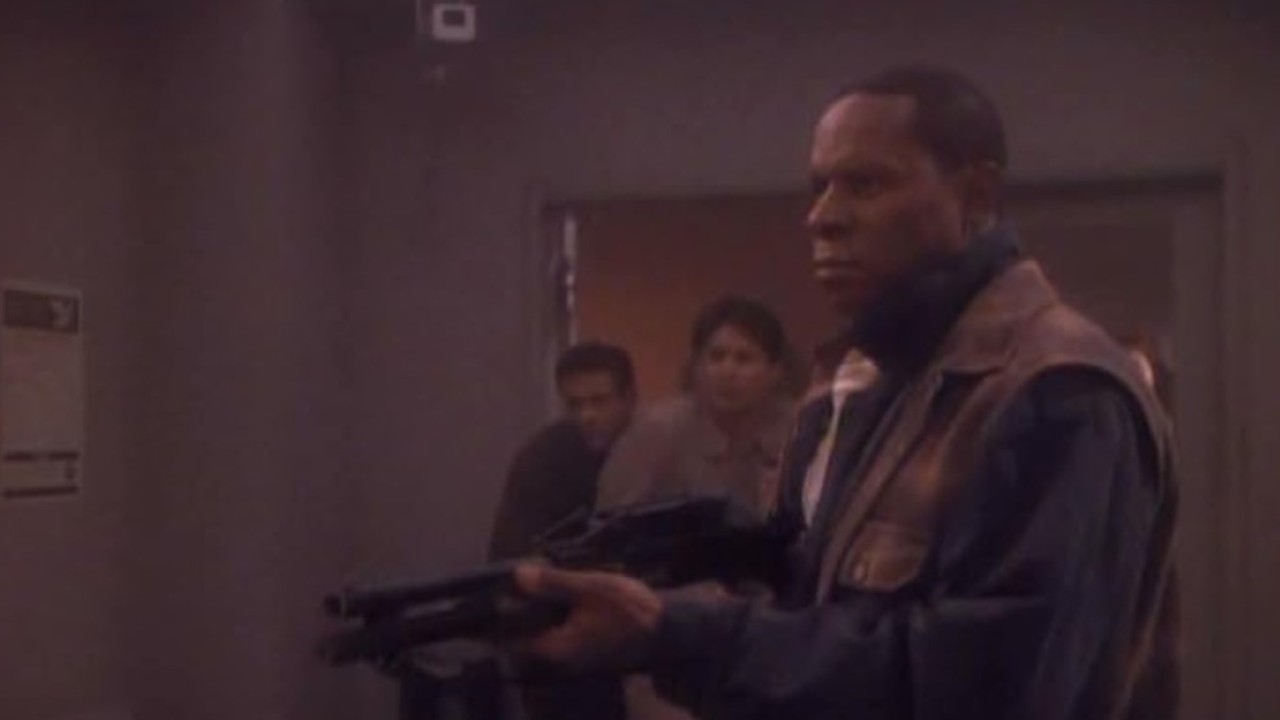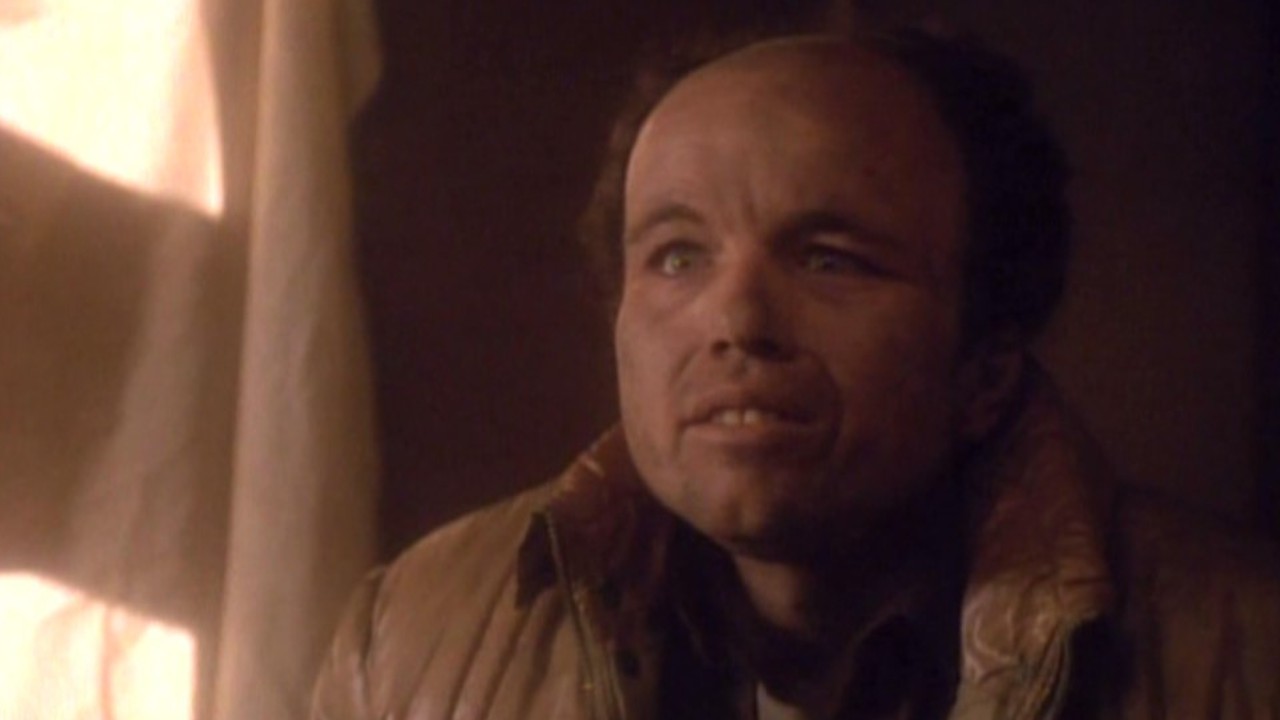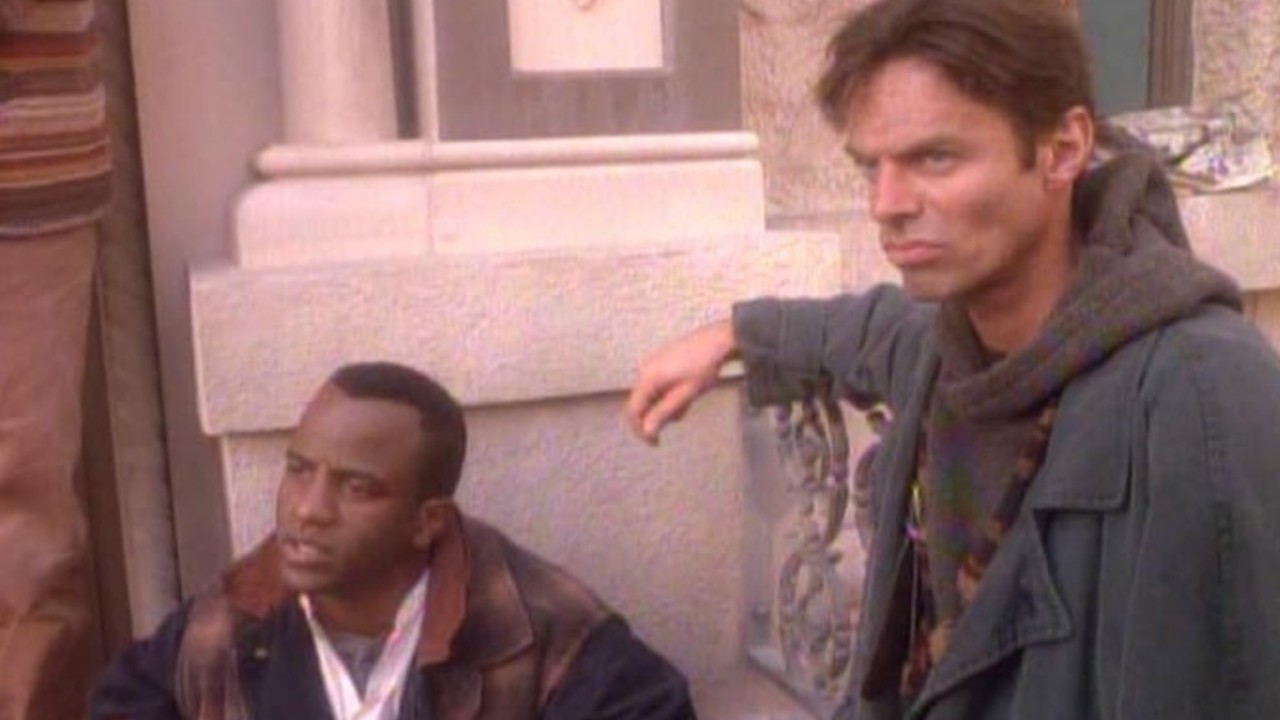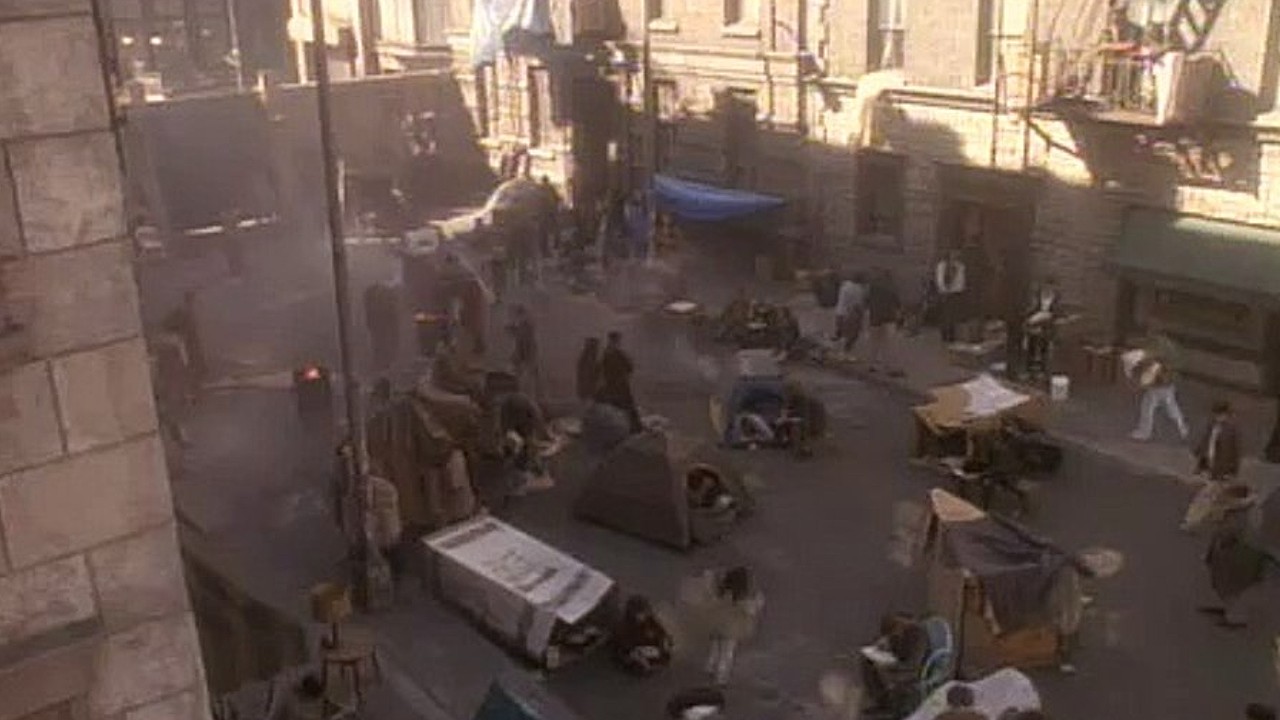
Along with First Contact Day on April 5, 2063, Friday Aug. 30, 2024 is one of the most important dates in "Star Trek" history.
It's the day Commander Benjamin Sisko got to ask that immortal sci-fi question – "What year is this?!" — after he and fellow time travelers Lt. Commander Jadzia Dax and Dr. Julian Bashir made a bumpy landing in 21st century San Francisco. It's also the eve of the Bell Riots that would shape the future of Earth, the Federation and the Alpha Quadrant as a whole.
First broadcast in January 1995, the "Past Tense" two-parter is widely regarded as one of the best stories from "Deep Space Nine." It's also among "Star Trek's" most politically charged adventures, set in a compassion-free 2024 where Sisko and Bashir find themselves trapped in an internment camp-like "Sanctuary", and Dax gets to see how the other half live when she's taken under the wing of a media mogul. So, to mark the anniversary of the history-shaping (but fictional) Bell Riots, we explain one of the most important events in the "Star Trek" timeline.
What were the Bell Riots?
Described by Commander Benjamin Sisko as "one of the most violent civil disturbances in American history", the Bell Riots took place in San Francisco during the first week of September 2024.
The disturbance was centered on the city's Sanctuary District A, one of many Sanctuaries found in major US cities in the "Star Trek" version of the early 2020s. Their original aim was to help unemployed or homeless citizens to find work or accommodation, but that vision was soon corrupted. The settlements were overcrowded and violent, and — with walls erected around them — effectively became internment camps. They also became a convenient way for wealthier members of society to ignore the problems on their doorstep.
Related: The best Star Trek: Deep Space Nine episodes ever
Things came to a head when residents seized control of Sanctuary District A, taking guards and other administrative staff hostage in the Security Bureau. The government sent in troops to restore order, and hundreds were killed in the subsequent skirmishes.
The authorities responded to rumors that the hostages had been killed by storming the building, but they soon learned that none of them had been harmed. They'd been protected by a certain Gabriel Bell, the man who gave the riots their name, and sacrificed himself to save the prisoners.
He would become a national hero, his death generating such public outrage that the Sanctuary program was abolished. The riots would be seen as one of the pivotal moments in American history, as the US government acted to repair social issues they'd previously dismissed, paving the way for the more utopian future we'd see in TV shows and movies across the franchise. (We'll try to ignore the fact that "Trek" lore tells us World War III is just a few short years away.)

How did Sisko, Dax and Bashir end up in 21st century San Francisco?
It's down to the sort of transporter accident that makes you wonder why anyone in the 24th century risks beaming anywhere. Sisko, Dax and Bashir were on their way to a symposium in San Francisco to discuss the Dominion threat when they were transported back in time to 2024 — a case of right city, wrong century.
Chief Miles O'Brien quickly identified the cause of the problem. The USS Defiant's hull was polarized with chroniton particles, a by-product of the ship's Romulan cloaking device. When an explosion in a microscopic singularity passing through Earth's solar system "shifted the chroniton particles in our hull into a high state of temporal polarization", the transporter beam was refocused back in time.
How did the Starfleet officers impact the events of the Bell Riots?
Starfleet directives state that officers must not, under any circumstances, alter past events. So when Sisko, a keen student of early 21st century history, realized they'd arrived in San Francisco on Friday, Aug. 30, 2024 — the eve of the Bell Riots — he told Bashir it was imperative that they avoid interfering with a pivotal period in American history. This order proved particularly distressing for the doctor, who pointed out how many people in the Sanctuary required treatment for mental illness.
This being "Star Trek", however, it didn't take long for Sisko and Bashir to make drastic changes to the timeline. While waiting for food, the pair were involved in an altercation with Biddle "BC" Coleridge, one of the ringleaders of the impending attack on the Security Bureau. They were ultimately saved by the intervention of another resident, who was stabbed by BC and subsequently died from his wounds. The name of that man? Gabriel Bell.
Back in the 24th century, the crew of the Defiant soon learned how pivotal Bell really was, as all evidence of the Federation — Starfleet headquarters, the spacedocks, the Utopia Planitia shipyards on Mars, the lot — vanished. O'Brien theorized that the explosion in the singularity created a subspace bubble around the ship that protected the Defiant from the altered timeline.
Following the real Bell's death, Sisko assumed his identity to ensure that history got back on track. He was shot in the military's assault on the hostage takers, but the wound was not fatal. He and Bashir were helped to escape by Sanctuary guards who saw what Bell/Sisko had done, planted Bell's ID on a dead body, and promised to tell the world what he'd done. Dax, meanwhile, successfully lobbied media mogul Christopher Brynner to restore computer access to Sanctuary District A, allowing residents to spread their story outside its walls.

How did they get back to the 24th century?
O'Brien worked out how to use the chroniton particles to focus the transporter beam towards different points in history. Unfortunately, he had no idea when Sisko, Dax and Bashir had landed — beyond narrowing it down to "a dozen different possibilities" — and only had enough polarized chronitons to take five or six trips back in time.
He and Major Kira made several fruitless jumps, taking in (seemingly) the 1920s, the 1950s and a 2048 that was "nothing like the mid-21st century I read about in school". On their final trip they struck lucky, making contact with Dax's combadge in 2024.
They all returned to a restored 2024, with one crucial difference: Sisko's face now appeared in the history books alongside Gabriel Bell's name.

What is "Past Tense"'s legacy in "Star Trek"?
As well as being widely regarded as one of the best stories from "Deep Space Nine"'s seven-season run, "Past Tense" continues to have an influence on "Star Trek" lore. Indeed, in "Prodigy" season 2 episode "Who Saves the Saviors", Vulcan cadet Maj'el makes a direct comparison with the events of 2024.
Referring to the Protostar crew's interaction with their own history, she points out that, "it would not be the first instance of a causal time loop in Starfleet history: the Bell Riots, the Cochrane warp test..." (The latter event occurred in "First Contact", when the "Next Generation" crew intervened to ensure Zefram Cochrane's first warp flight in 2063 wasn't derailed by Borg interference.)

That said, "Star Trek" mythology may be more malleable than it initially appears. The 2024 Los Angeles visited by Jean-Luc Picard and co in "Picard" season 2 doesn't feel quite as dystopian as the San Francisco of "Past Tense", while the "point of divergence" mentioned by the Borg Queen is Renée Picard's space flight, rather than the Bell Riots. (Few "Trek" shows have embraced the past as "Picard" did, so it's surprising that show did so little to acknowledge the franchise's previous trip to 2024.)
Also, when La'an Noonien Singh visited 2022/23 Toronto with an alternative James T Kirk in "Strange New Worlds" episode "Tomorrow and Tomorrow and Tomorrow", they rescued a boy named Khan from the Noonien-Singh Institute — even though the infamous Khan originally left Earth to escape the Eugenics Wars of 1996. This suggests that, even if the core building blocks of the mythology remain in place, the order they occur — and the specific dates — may be open to reinterpretation as the real-life calendar catches up with its equivalent stardates from the final frontier.







